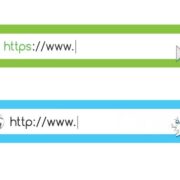डिजिटल दुनिया के पीछे का रहस्य!
क्या आपने कभी सोचा है कि आपके पसंदीदा ऐप्स, वेबसाइट या वीडियो गेम इतने शानदार कैसे बनते हैं? असल में, इनके पीछे कई तरह की प्रोग्रामिंग भाषाएँ मिलकर काम करती हैं. ये भाषाएँ सॉफ्टवेयर बनाने के लिए बिल्डिंग ब्लॉक्स की तरह होती हैं और इन्हीं से हमारी डिजिटल दुनिया बनती है. आइए अब कुछ मुख्य प्रोग्रामिंग भाषाओं के बारे में जानते हैं जो अभी डिमांड में है।
पाइथन Python: प्रोग्रामिंग का स्विस आर्मी नाइफ़
पाइथन को प्रोग्रामिंग का स्विस आर्मी नाइफ़ कहा जाता है, यह बेहद ही उपयोगी की प्रोग्रामिंग भाषा है और इसका इस्तेमाल डेटा एनालिसिस, वेब डेवलपमेंट, ऑटोमेशन और प्रोटोटाइपिंग जैसे कई कामों के लिए किया जा सकता है. अगर आप प्रोग्रामिंग सीखना शुरू कर रहे हैं या ऐसी भाषा चाहते हैं जिसे समझना आसान हो, तो पाइथन आपके लिए बेहतरीन विकल्प हो सकता है. साथ ही, पाइथन डेवलपर्स की डिमांड काफी ज्यादा है, तो डाटा साइंस और आर्टिफिशियल इंटेलिजेंस जैसे क्षेत्रों में नौकरी के काफी अवसर मिलते हैं.
जावा Java: एक बार लिखें, कहीं भी चलाएं
जावा को “Write Once, Run Anywhere” फीचर के लिए जाना जाता है. यानी एक बार लिखा गया जावा प्रोग्राम अलग-अलग प्लेटफॉर्म पर चलाया जा सकता है. इसलिए यह विभिन्न प्लेटफॉर्म पर चलने वाले एप्लिकेशन बनाने के लिए बेहतरीन है. अगर आप मोबाइल ऐप्स, क्लाउड एप्लिकेशन या एंटरप्राइज लेवल वेब एप्लिकेशन बनाना चाहते हैं, तो जावा आपके लिए भाषा हो सकती है. जावा डेवलपर्स का एक बड़ा समुदाय है, इसलिए आपको आसानी से सहायता और जानकारी मिल सकती है.
जावास्क्रिप्ट JavaScript: वेब को चलाने वाली भाषा
वेब डेवलपमेंट के लिए जावास्क्रिप्ट सबसे ज्यादा इस्तेमाल की जाने वाली भाषा है. खासकर यह इंटरएक्टिव और रिस्पॉन्सिव वेबसाइट बनाने के लिए बहुत उपयोगी है. चाहे आप फ्रंट-एंड या बैक-एंड डेवलपमेंट, मोबाइल ऐप डेवलपमेंट या यहां तक कि गेम डेवलपमेंट में रुचि रखते हैं, जावास्क्रिप्ट आपके लिए काम आती है. Node.js के आने के बाद अब जावास्क्रिप्ट का इस्तेमाल सर्वर-साइड डेवलपमेंट के लिए भी किया जा सकता है.
C#: पावर और स्थिरता
अगर आप विंडोज एप्लिकेशन, गेम या वेब एप्लिकेशन डेवलप करना चाहते हैं, तो C# एक अच्छा विकल्प हो सकता है. अपनी पावर और स्थिरता के लिए जानी जाने वाली, C# ऑब्जेक्ट-ओरिएंटेड प्रोग्रामिंग की जरूरत वाली परियोजनाओं के लिए बेहतरीन विकल्प है. गेम डेवलपमेंट के लिए Unity जैसे प्लेटफॉर्म की लोकप्रियता के साथ, स्किल्ड C# डेवलपर्स की डिमांड काफी ज्यादा है.
C और C++: सॉफ्टवेयर के बिल्डिंग ब्लॉक्स
C और C++ भले ही पुरानी भाषाएँ हैं, लेकिन आज भी इन्हें ऑपरेटिंग सिस्टम, व्यावसायिक उत्पादों और वीडियो गेम जैसे महत्वपूर्ण प्रदर्शन वाले अनुप्रयोगों में बड़े पैमाने पर इस्तेमाल किया जाता है. अगर आप लो-लेवल प्रोग्रामिंग में रुचि रखते हैं या ऐसे एप्लिकेशन बनाना चाहते हैं जिनमें अधिकतम परफॉर्मेंस की जरूरत होती है, तो C और C++ आपके लिए सही भाषाएँ हो सकती हैं.
कोटलिन Kotlin: एंड्रॉयड डेवलपर की भाषा
JetBrains द्वारा विकसित, कोटलिन जावा के साथ संगत है और एंड्रॉयड एप्लिकेशन बनाने के लिए बिल्कुल सही है. इसका संक्षिप्त सिंटैक्स और एडवांस फीचर्स विश्वसनीय और बनाए रखने योग्य कोड लिखना आसान बनाते हैं. अगर आप मोबाइल डेवलपमेंट या सर्वर-साइड डेवलपमेंट में रुचि रखते हैं, तो कोटलिन को जरूर देखना चाहिए.
रूबी Ruby: वेब डेवलपमेंट की भाषा
रूबी अपनी सरलता और पढ़ने में आसानी के लिए जानी जाने वाली एक ओपन-सोर्स भाषा है, जो इसे वेब डेवलपमेंट के लिए एक लोकप्रिय विकल्प बनाती है. चाहे आप स्टेटिक साइट जेनरेशन, वेब स्क्रैपिंग या डेटा प्रोसेसिंग में रुचि रखते हैं, रूबी के पास देने के लिए कुछ है. और Ruby on Rails फ्रेमवर्क के साथ, फुल-स्टैक वेब डेवलपमेंट पहले से कहीं ज्यादा आसान हो गया है.
PHP: वेब बैकएंड को शक्तिशाली बनाने वाली भाषा
PHP बैक-एंड डेवलपमेंट के लिए एक महत्वपूर्ण भाषा है, और सभी वेबसाइटों में से 78.1% पर इसकी मौजूदगी है. अगर आप सर्वर-साइड स्क्रिप्टिंग या वेब एप्लिकेशन डेवलपमेंट में रुचि रखते हैं, तो PHP आपके लिए भाषा हो सकती है. Laravel और Symfony जैसे फ्रेमवर्क के साथ, मजबूत और स्केलेबल वेब एप्लिकेशन बनाना बहुत आसान है.
स्विफ्ट Swift: एप्पल की पसंदीदा भाषा
अगर आप iPhone, iPad और Mac जैसे Apple उपकरणों के लिए एप्लिकेशन डेवलप करने में रुचि रखते हैं, तो स्विफ्ट आपके लिए भाषा है. अपने परफॉर्मेंस और विश्वसनीयता के लिए जाना जाने वाला, स्विफ्ट iOS, macOS, watchOS और tvOS एप्लिकेशन बनाने के लिए बिल्कुल उपयुक्त है.
गो Go: कंकरेंसी Concurrency की भाषा
गो, जिसे Golang के नाम से भी जाना जाता है, API, वेब एप्लिकेशन और वितरित नेटवर्क सेवाओं को विकसित करने के लिए एक लोकप्रिय भाषा है. अपने सरल सिंटैक्स और कंकरेंसी के लिए इनबिल्ट सपोर्ट के साथ, गो स्केलेबल और कुशल सिस्टम बनाने के लिए बेहतरीन है.
टाइपस्क्रिप्ट TypeScript: सुपरपावर वाली जावास्क्रिप्ट
टाइपस्क्रिप्ट जावास्क्रिप्ट का सुपरसेट है जो स्टेटिक टाइपिंग के माध्यम से कोड विश्वसनीयता और मजबूती को बढ़ाता है. अगर आप वेब डेवलपमेंट में रुचि रखते हैं या Node.js के साथ एप्लिकेशन बना रहे हैं, तो TypeScript देखने लायक हो सकता है.
HTML और CSS: वेब के बिल्डिंग ब्लॉक्स
HTML और CSS भले ही पारंपरिक प्रोग्रामिंग भाषाएँ न हों, लेकिन ये वेबसाइट और एप्लिकेशन बनाने के लिए आवश्यक हैं. HTML का उपयोग वेब पेजों को संरचित करने के लिए किया जाता है, जबकि CSS का उपयोग स्टाइलिंग और लेआउट के लिए किया जाता है. अगर आप वेब डेवलपमेंट में रुचि रखते हैं, तो HTML और CSS में महारत हासिल करना जरूरी है.
अपने प्रोजेक्ट के लिए सही प्रोग्रामिंग भाषा चुनना कठिन हो सकता है, लेकिन थोड़े से मार्गदर्शन के साथ, आप बिल्कुल सही भाषा चुन सकते हैं. चाहे आप वेब डेवलपमेंट, मोबाइल ऐप डेवलपमेंट, गेम डेवलपमेंट या कुछ और में रुचि रखते हैं, आपके लिए एक भाषा है. तो अपना समय लें, अपना रिसर्च करें और हैप्पी कोडिंग!
If you’ve ever wondered about the magic behind your favorite apps, websites, or video games, it’s time to unveil the mystery. Behind every digital marvel lies a multitude of programming languages working together in harmony. These languages are the building blocks of software development, shaping the digital world we live in. Let’s take a closer look at some of the main ones.
Python: The Swiss Army Knife of Programming Python is like the Swiss Army knife of programming languages. Its versatility makes it perfect for tasks ranging from data analysis and web development to automation and prototyping. If you’re just starting out or want a language with a syntax that’s easy to understand, Python might be the way to go. Plus, with a high demand for Python developers, job opportunities abound in fields like data science and artificial intelligence.
Java: Write Once, Run Anywhere Java is known for its “Write Once, Run Anywhere” feature, making it ideal for developing applications that can run on various platforms. If you’re interested in creating mobile apps, cloud applications, or enterprise-level web applications, Java could be the language for you. And with a massive community of Java developers, there’s no shortage of resources and support available.
JavaScript: Powering the Web JavaScript is the go-to language for web development, particularly for creating interactive and responsive websites. Whether you’re interested in front-end or back-end development, mobile app development, or even game development, JavaScript has got you covered. And with the introduction of Node.js, JavaScript can now be used for server-side development as well.
C#: Power and Stability If you’re interested in developing Windows applications, games, or web applications, C# might be worth considering. Known for its power and stability, C# is a great choice for projects that require object-oriented programming. And with the popularity of platforms like Unity for game development, there’s plenty of demand for skilled C# developers.
C and C++: Building Blocks of Software C and C++ may be older languages, but they’re still widely used in critical performance applications like operating systems, commercial products, and video games. If you’re interested in low-level programming or developing applications that require maximum performance, C and C++ could be the languages for you.
Kotlin: The Android Developer’s Best Friend Developed by JetBrains, Kotlin is compatible with Java and perfect for creating Android applications. Its concise syntax and advanced features make it easy to write reliable and maintainable code. If you’re interested in mobile development or server-side development, Kotlin is definitely worth checking out.
Ruby: The Language of Web Development Ruby is an open-source language known for its simplicity and readability, making it a popular choice for web development. Whether you’re interested in static site generation, web scraping, or data processing, Ruby has something to offer. And with the Ruby on Rails framework, full-stack web development has never been easier.
PHP: Powering the Web Backend PHP is a significant language for back-end development, with a presence on a staggering 78.1% of all websites. If you’re interested in server-side scripting or developing web applications, PHP might be the language for you. And with frameworks like Laravel and Symfony, building robust and scalable web applications is a breeze.
Ruby: Apple’s Language of Choice If you’re interested in developing applications for Apple devices like iPhones, iPads, and Macs, Swift is the language for you. Known for its performance and reliability, Swift is perfect for building iOS, macOS, watchOS, and tvOS applications.
Go: The Language of Concurrency Go, also known as Golang, is a popular language for developing APIs, web applications, and distributed network services. With its simple syntax and built-in support for concurrency, Go is perfect for building scalable and efficient systems.
TypeScript: JavaScript with Superpowers TypeScript is a superset of JavaScript that enhances code reliability and robustness through static typing. If you’re interested in web development or building applications with Node.js, TypeScript might be worth exploring.
HTML and CSS: The Building Blocks of the Web HTML and CSS may not be traditional programming languages, but they’re essential for building websites and applications. HTML is used for structuring web pages, while CSS is used for styling and layout. If you’re interested in web development, mastering HTML and CSS is a must.
Choosing the right programming language for your project can be daunting, but with a little guidance, you can find the perfect fit. Whether you’re interested in web development, mobile app development, game development, or something else entirely, there’s a language out there for you. So take your time, do your research, and happy coding!








